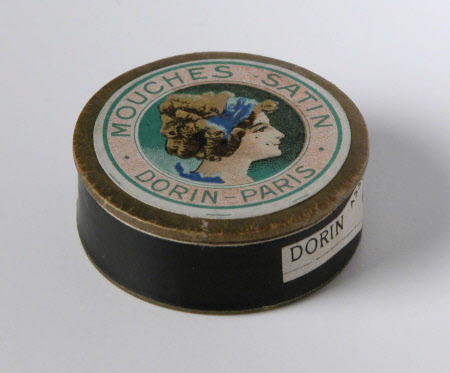Beauty spot container
Category
Ephemera
Date
c. 1880
Materials
Paper
Measurements
13 mm (Height); 33 mm (Diameter)
Place of origin
Paris
Order this imageCollection
Llanerchaeron, Ceredigion
NT 546022
Caption
A box of mouches (literally:‘flies’) may sound distasteful to some, but this little box contains a favourite beauty trick of European women for over 200 years. Better known as beauty spots, these small black taffeta pieces were named after their resemblance to a fly that has landed on the wearer’s skin. Popularised by the French in the 18th century and deployed as a cunning way to cover unsightly marks, mouches created a map of intrigue across the décolletage. The placement of the beauty spot – on the cheek or by the mouth, for example – also became a coded means of communicating emotions, wealth and even political allegiances. They were carried in boites à mouches (fly boxes). This Maison Dorin box probably dates from around 1880. Somehow, the box ended up in the collection of Pamela Ward (1908–94), owner of both a Knightsbridge antiques shop and a collection of over 5,000 treasures, which she left to the National Trust. The mouches, it appears, were as much a curiosity in the early 20th century as they appear to us today.
Summary
Circular container with label showing ladies head and text 'Mouches Satin Dorin Paris'. The side with additional label 'Dorin Assorties Paris'. Contains assorted gummed beauty spots.
Provenance
An item from the Pamela Ward Collection, left to the National Trust in Miss Ward's will in 1994.
Marks and inscriptions
Mouches Satin Dorin Paris (label)
